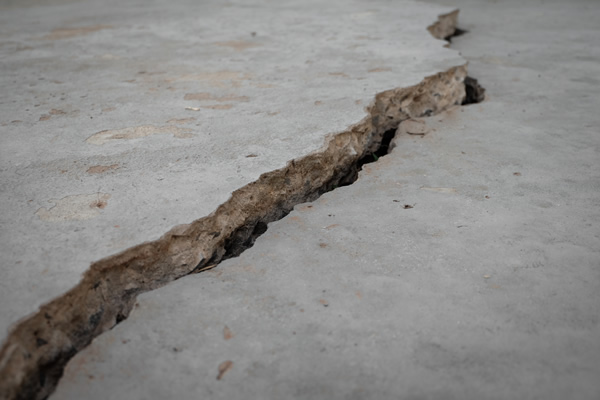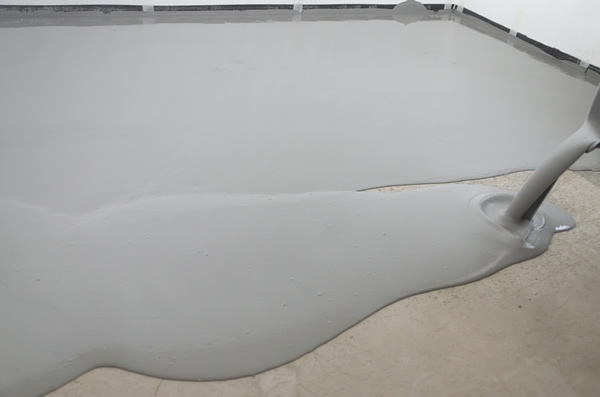
Concrete floors are also the most commonly used flooring in commercial buildings since it can withstand heavy traffic. Similarly, if you opt for concrete floors in your home, your high heels, pet’s claws, or any dropped items won’t easily damage your concrete. You have to put a lot of effort into making significant damage to your concrete floor because of its durability. However, this does not make concrete invincible as things like poor installation, freeze-thaw, and shrinking can damage it.
Did you discover another crack on your concrete floor that wasn’t there a few days ago? Thinking about getting your concrete replaced? There are several reasons why concrete floors get damaged, but before deciding on getting your concrete replaced, you may want to figure out the cause of the cracking first and see if a restoration is possible.
So, how do you know if your concrete floors can still be restored?
Regularly Examine Concrete Floors
Before deciding on what to do about your concrete floors, you need to inspect them regularly. Doing so helps you notice the changes to it over time, and which areas need more attention. A regular inspection of your concrete floors can also prevent rapid changes in the damage which could become a bigger problem later on. You may notice some cracks, spalling, and chipping, which minor repair can fix depending on its degree.
Cracks in concrete are unavoidable. How big or deep the crack is could determine if they’re a potential danger or not, but you also may not want to have visible cracks on your concrete’s surface. They’re quite an eyesore, after all. Thanks to technology, there are quick fixes available in the market for minimal cracking. These fixes involve injecting either a resin or a concrete caulk to the cracks.
Injecting resin - either epoxy or polyurethane - makes the crack stronger than its surrounding concrete. The material is applied to the crack after routing out the crack with an angle grinder and cleaning the area and usually cures within 12 – 24 hours. This type of fix has limited colors available, as they do not give much importance to aesthetics.
Concrete caulk, on the other hand, is made up of softer resin material. They’re applied to cracks using a caulk gun and are more visible, which is why they have a wider variety of colors.
Though you may only see as far as the surface, there might be more severe problems that could need major restorations. It’s best to seek professional advice from concrete restoration firms to keep your concrete floors in their best condition.
When To Repair Concrete Floors
When there are signs of deterioration, rising, cracking, and when you can see what’s underneath, it may be time to get your concrete floors repaired. Early repairs can prevent further damage to the concrete floor, sparing you from the costly expenses of a replacement. While some surface cracks may easily be solved by filling them in, painting, or cleaning it, some cracks may also lead to deeper issues, so it’s best to have them checked.
If the concrete slab contains surface, hairline cracks, or has aesthetic flaws, you may want to consider repairing the concrete floor with surface topping. The three methods in surface restoration include:
- Micro-toppings
- Imprinted Concrete
- Self-leveling Concrete
A micro-topping is a cement-like product used to treat old cracked concrete. It’s made with polymer-modified concrete with sand and applied in thin layers using trowels or brushes. The application depends on how you want the finished surface to look like. If you aim to have a smooth finish, you may want to apply two base coats and a top coat without sand.
Imprinted or stamped concrete is an economical and durable solution with a variety of colors and patterns you can choose from. A thin layer of concrete is applied to a slab and replicates the appearance of bricks, stones, or tiles with the help of a stamping tool. The method is similar to micro-topping, but with more sand - making the finished surface rougher. A concrete sealer is then applied after the pattern has formed to protect the concrete.
Self-leveling concrete provides a heavy-duty concrete floor. This method has two types: self-leveling overlays and the self-leveling toppings. Self-leveling overlays smoothen uneven concrete surfaces, while self-leveling toppings serve as the finished and polished flooring.
However, if the concrete floor has wide cracks, freeze-thaw damage, or starts to rise and break, you may want to look at other options for restoration - or possibly, replacement.
When To Replace Concrete Floors
When properly installed, concrete floors generally last for a lifetime. They’re very strong and durable, after all. In order for the concrete floors to last as long as you want them to, it’s not enough to simply install concrete floors. It'd be best if you consider other factors such as a good foundation as well.
If you have tried repairing your floors, but the problem keeps recurring, it may be time to replace your concrete floors. When an epoxy coating treatment is no longer enough to save your flooring and cracks still resurface, the problem may lie at the foundation of your concrete floor. The soil underneath your flooring may have shifted, causing damage to your foundation.

Once there’s a significant shift underneath, your foundation will continue to crack no matter how many times you try to restore it. A replacement would be necessary to lay down a stronger foundation and to prevent further damage.
For concrete driveways, here are a few signs that your driveway may be due for replacement:
- The concrete driveway is more than 20 years old. Concrete may be a heavy-duty material, but due to the heavy traffic it goes through coupled with exposure to the elements, it’s typically good for about 20 years. More than that and signs of deterioration and aging will begin to appear, so replacement is necessary.
- Your driveway and the area around it are no longer draining properly. This could lead to other property damage as the water could be directed to your home’s foundation instead. If you haven’t waterproofed your basement or home’s foundation, it can cause more damage to your entire home.
- Potholes start to appear. Multiple potholes break off pieces of your driveway, and they also gather water, which could further damage your driveway. They could go deep enough to damage your foundation, which will be an expensive repair if done individually. A whole replacement is a much better solution.
- The noticeable appearance of spiderweb cracks. These are cracks that are interconnected in the surface much like cracks you see in dry soil. When there are plenty of these cracks, it’s a sign that it may be due for a replacement.
- If there are multiple issues in your concrete driveway that require different types of individual repairs, you should consider a replacement instead. It may be costly, but the end results are guaranteed to be better than what you’d get with constant repairs.
When In Doubt, Ask The Experts!
Deciding whether to get a repair or a replacement may prove to be a challenge, especially if you lack the expertise. You wouldn’t want to get a whole replacement when the damages are only minor, and repairs are possible without the hassle of a whole concrete crew. It could surprise you how some concrete floors that may seem unsalvageable can be restored.
Likewise, you wouldn’t want to constantly make minor repairs only to find the same problem recurring. You may see a crack in the surface, but a deeper problem occurs underneath. Without addressing the bigger problem, constant repairs on the crack will do more harm than good.
In order to avoid the mismatch of the solutions to your concrete floor problems, it’s best to get in contact with a team to offer you the best decisions when it comes to your concrete floors. Wouldn’t you want a team of experts to put in the same care and effort to your concrete floors the same way they would to a well-known commercial building? When working with a concrete restoration team, you’re sure to get the same high-quality concrete as your local sports arena.
Don’t be afraid to seek consultation from the experts! If you’re worried about the expenses in consultations, you can search for companies that offer free cost estimates.
